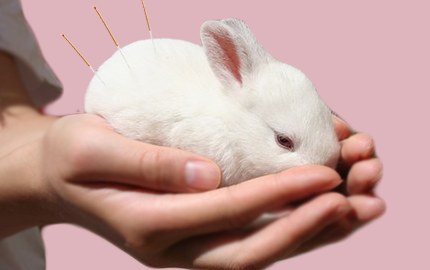Traditional Chinese Medicine for Your Furry & Feathered Friends
Posted by Chava Quist on 20th May 2023

Today many of us consider our pets as a true part of the family. Most every lifestyle comfort available to us has a counterpart aimed at our furry friends from accessories to junk foods to weddings and yoga classes. Healthcare is certainly no exception. The American Pet Products Association reported $48.35 billion dollars was spent on pet products and services in 2010 with $13 billion going to veterinary care.
In only a few decades, medical care for our pets has become as advanced and diverse as anything available in human hospitals, surpassing general practice and expanding into specialized areas such as oncology, organ transplantation, dialysis services, hospice care, mental health and dentistry. As human healthcare recipients increasingly seek out natural options that follow a holistic model for their own care, it only makes sense that they want the same services for their pets.
While the notion of practices such as acupuncture and herbal medicine for animals may seem recent, in fact Traditional Chinese Veterinary Medicine (TCVM) has been existent for centuries. As healthy livestock animals and in particular horses were integral to human survival at this time, they were the amongst the first TCVM patients. The Zhou dynasty (1046-221 BCE) book the Zhou Li Tian Guan (The Rites of Zhou) details the medical treatment of horses and describes various serious animal diseases. Around this time, we also have evidence of the use of leather horseshoes and other farrier services to prevent foot diseases as well as bamboo scrolls with herbal veterinary prescriptions.
The end of the Zhou dynasty saw an explosion in medical books written on the treatment of equine diseases as well as the inception of the Tai Pu Si, China’s first organized veterinary teaching institution. The Bing Ma Jian (Hospital of Sick Horses) became the country’s first veterinary clinic in 1007. By 1368, institutional veterinary training was mandatory for treating animals. While TCVM continued to grow in scope and nuance over the generations, its practice was almost lost along with TCM during the period of the Chinese Cultural Revolution until its acceptance and standardization by the government.
Today in China, veterinarian students can choose from three specialty tracks focusing on Western medicine, TCVM, or an integrated blend of the two. The practice of TCVM now includes household pets as well as livestock animals. In the United States, the scope of practice of acupuncturists is controlled by the states and varies in its allowance of animal patients. Many TCVM practitioners are veterinarians with an additional certification to practice acupuncture on animals. Two main certification tracks exist for veterinarians in the States, programs focusing on TCM and Five-Element theory and those with a neuroanatomical approach.
The practice of TCVM is the same as its application in people while still being wholly different. Practitioners rely on animal caretakers to provide a detailed holistic health history, and the tongue map, pulse diagnosis and other physiognomic parameters are applicable. Veterinary patients experience the same benefits of acupuncture such as pain relief and a relaxing, endorphinergic response. Animals intolerant of sitting still while retaining acupuncture needles may be good candidates for ‘aquapuncture,’ the injection of a saline or vitamin solution bleb into an acupuncture point using a hypodermic needle. As the body tissues work to absorb the inert injection the acupuncture point continues to be stimulated.
The use of acupuncture in animals is currently applied with excellent results to a wide variety of conditions such painmanagement, allergies, separation anxiety and other behavior concerns, post-surgical recovery and digestive complaints. TCVM could also be seen as a good validation of TCM practice in humans, as veterinary patients often show dramatic and measurable improvement with treatment and they are a population immune to the placebo effect.
While the mainstreaming of TCM grows, so does the acceptance of TCVM as it continues to be an increasingly sought after option. Many would argue that a holistic paradigm is a natural fit for the treatment of animals taking into account their sensory sensitivities and need for less invasive therapies. In their station as valued companions, our pets are benefitting from our increased recognition of their socio-emotional and healthcare needs.
By Chava Quist
Photo: Oberon, the rabbit, receives acupuncture for vestibular disease at The Center for Avian & Exotic Medicine. Learn more at www.avianandexoticvets.com
To find a TCVM practitioner for your pet, search by state:www.aava.org/php/aava_blog/aava-directory



